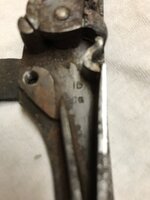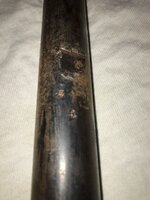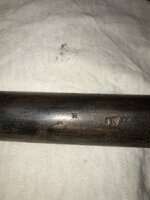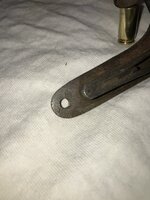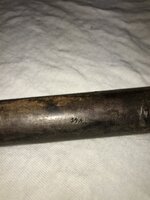Bronze Supporter
- Messages
- 660
- Reactions
- 285
I don't usually post about my firearm projects. But I thought this might be interesting to someone and would like to hear opinions. I just recently purchased an 1853 Enfield "shotgun" . It has had the front part of the stock and sights removed . A short length of screw has been added as a bead and a ramrod thimble soldered on. I know it was common to create these shotguns from the hundreds of thousands of civil "war surplus " . No different then all of the sporterized Krags, Springfields and Mausers we see today. Sad, But I understand the mind set , as both in their day were cheap and common. My "new "gun is in very good shape for it's age of one hundred and sixty plus years. I have been researching the 1853 Enfield since my purchase a couple of days ago . I realize the the pattern 1853 was adopted in 1853, but was made for some years after that. My musket, which is how I will refer to it, has no British proof marks so was most likely imported for our first civil war. It does have a stamping on the lock plate and hammer . An anchor with an S ( I believe) and a C on ether sides of the shank. I know an anchor with a CS and later a JS were stamped on guns of the Confederacy. Individual states also stamped their firearms, with SC being South Carolina. I see no reference to to an anchor and SC together. I know fakery is common, but I would not think likely on a low value shotgun conversion. I wish my gun was all original in rifled musket and as issued . But I feel it has a certain cool factor as a weapon of war rehabilitated to a homesteader survival gun. I ran a bore scope down the bore and it is in covered with surface rust, but no deep pitting. I intend to shoot this gun after careful cleaning and inspection. I plan on a light polishing of the bore and magnafluxing the barrel to check for cracks. I will only use a very light charge of black powder and shot. Maybe a ball loaded with wadding in musket fashion. The nipple is badly corroded and has been made smaller for a #11 size cap . I had thought about recreateing the full length stock but will leave it as as shotgun , since it will never be 100% correct anyway. So here are my questions, Is the anchor SC stamp real or fake? Were the 1853 pattern Enfield ever issued as muskets ( smooth bore) or was this musket bored out as was common to create a shotgun? Should I attempt to remove the nipple and replace it ? I am a skilled mechanic/ machinist but not sure it is worth the risk. I am concerned it is just brazed into place.





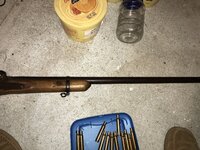

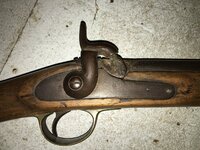
Last Edited:








